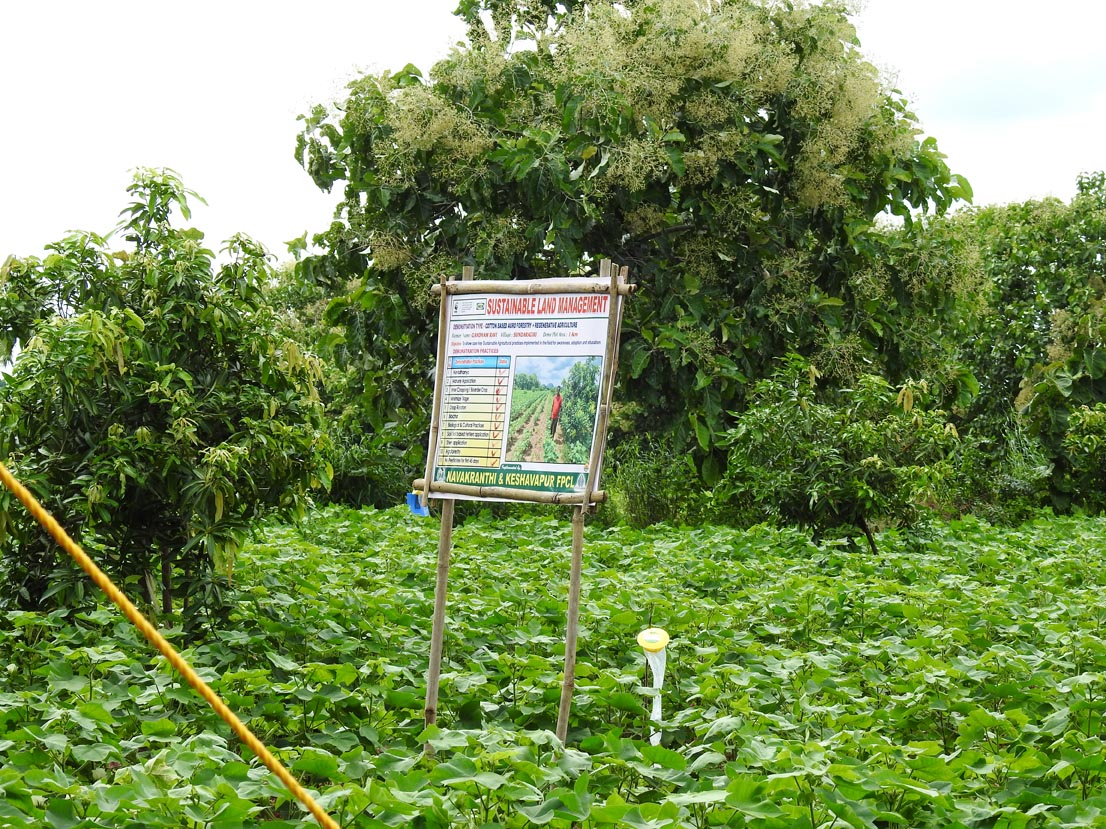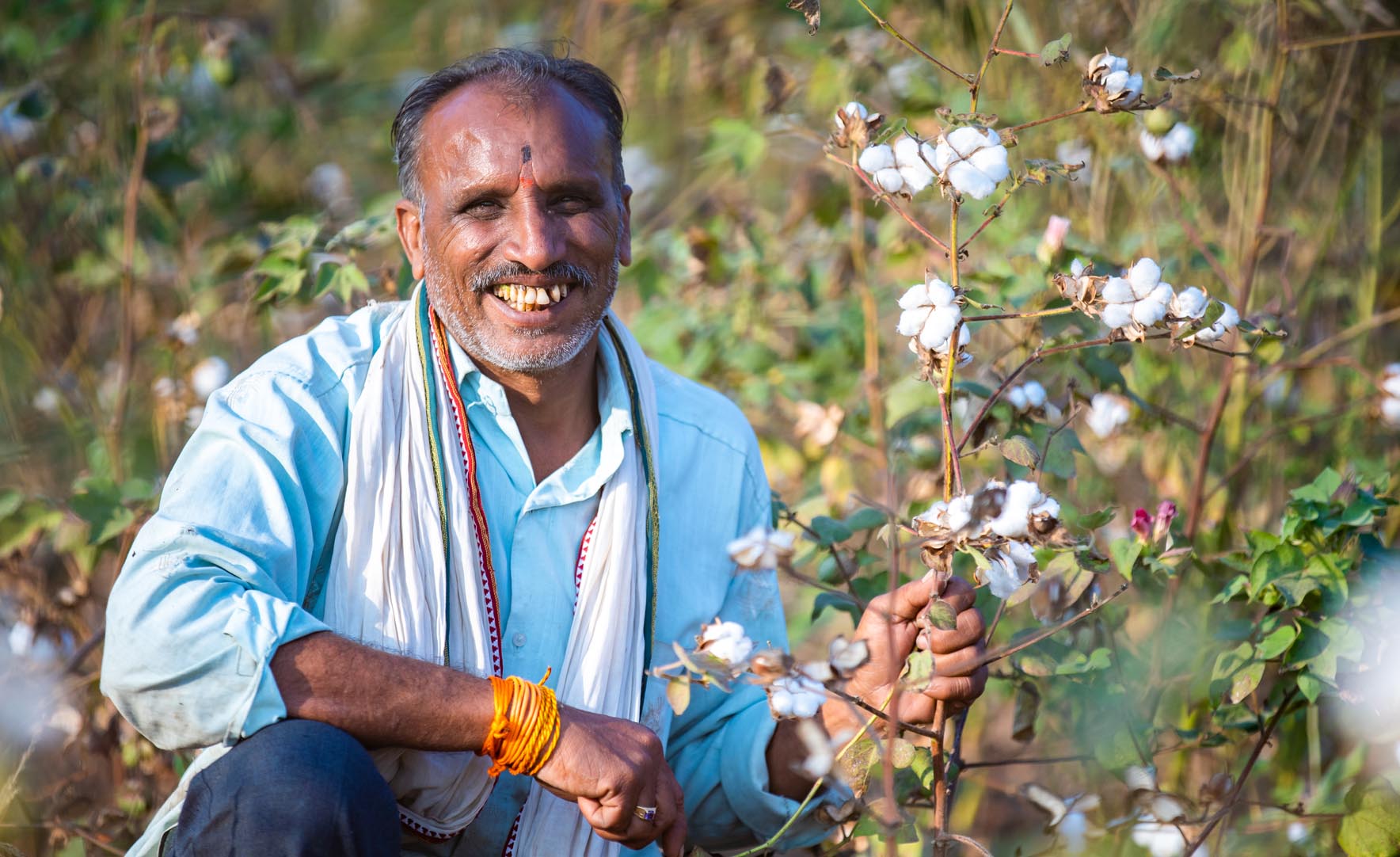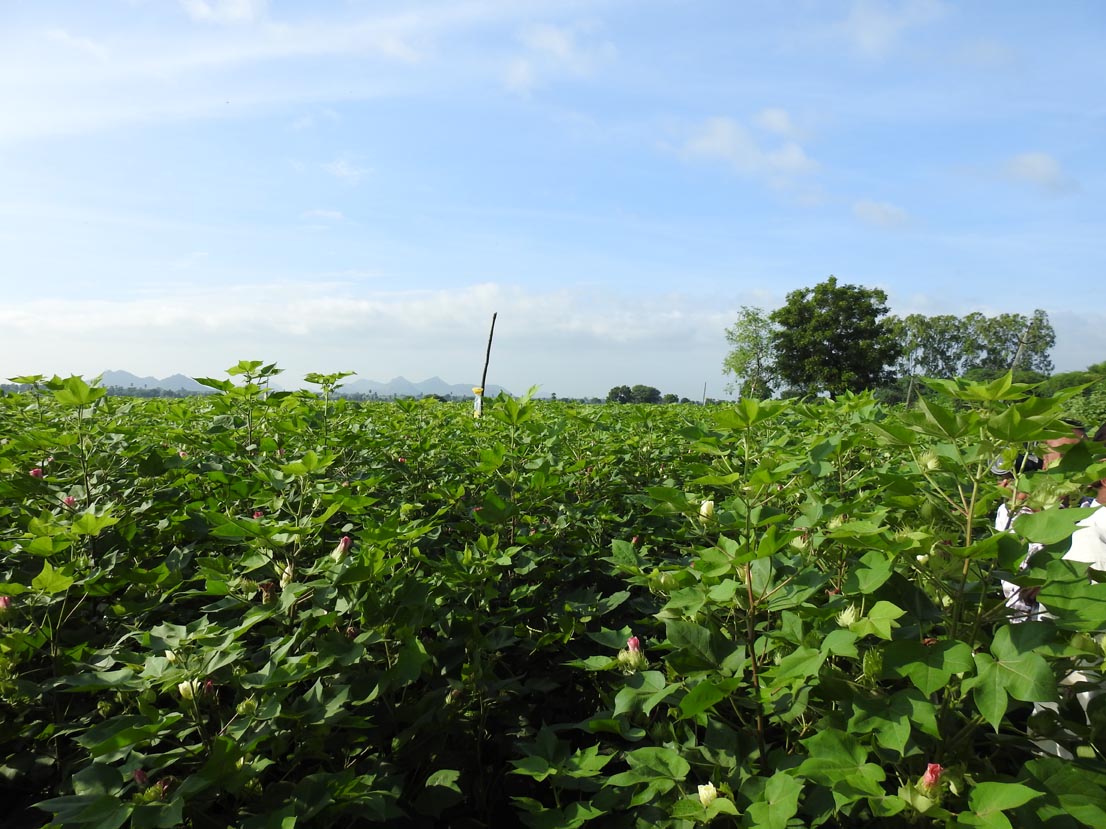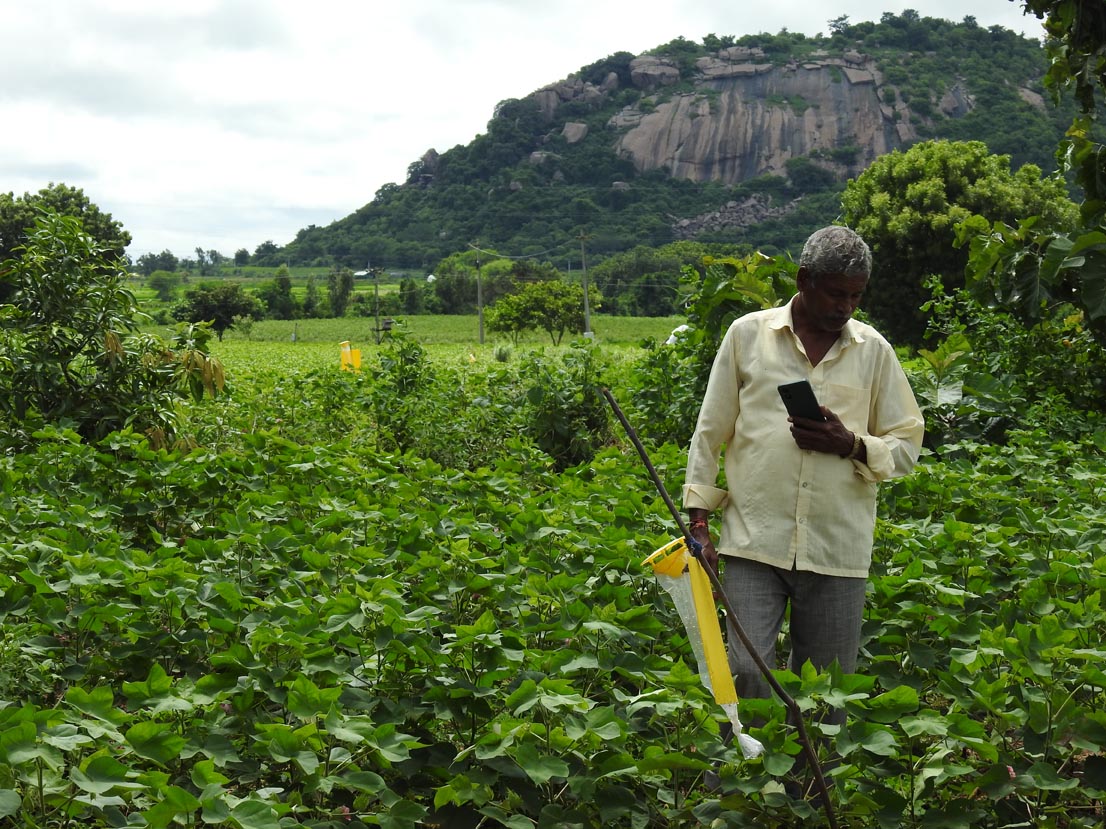India is the world’s second-largest cotton producer, after China , with more than 60 million people working directly or indirectly in the country’s cotton value chain. WWF and IKEA have been working together in India to address challenges in cotton agriculture and to introduce better farming practices. In doing so, the partnership has joined forces with farmers and local communities to promote community-led water stewardship, reduce greenhouse gas emissions and soil erosion, and increase biodiversity by integrating trees in cotton landscapes. The partnership also works with farmers on increasing their use of low-cost Nature-based Solutions (NbS) to manage their land and water resources in a responsible way.
2004: Early years
In 2004, WWF-India and IKEA developed the ‘Thirsty Crop Sustainable Cotton Initiative’ with the aim of defining what ‘better management practices’ entail. This initiative provided an initial 40 farmers with water-efficient farming methods to reduce the water footprint of cotton cultivation. The early years of the partnership also revealed the need to establish a governance structure to bring people together on issues surrounding global cotton production and help support its market transformation to collectively address the negative environmental and social impacts of conventional cotton production. These groupings are eventually what helped lead to the establishment of the Better Cotton Initiative (BCI), today known as Better Cotton, a programme working to promote responsible cotton production at a global scale and setting standards for reducing pesticide and water use while improving social and economic conditions of farmers.
2005-2010: Laying the groundwork for the Better Cotton Initiative
In 2005, the cotton programme was officially established within the partnership. The same year, the Better Cotton Initiative (BCI) was formed, where WWF and IKEA were founding members. But it would not be until 2009 that BCI had developed global principles and criteria for Better Cotton. A precursor to the BCI was the Sustainable Cotton Initiative in India, established in 2007. Here, the partnership initiated a pilot project with the goal of helping farmers transition from conventional to more sustainable farming by developing Better Management Practices (BMP) that improved crop yields, lowered input costs for farmers, created market linkages, and encouraged practices that protect soil health and biodiversity. These initiatives were at the forefront of the development of worldwide standards for BCI. Results of the pilot showed that the consumption of water, pesticides, and fertilisers had decreased by 30%, 38% and 32%* among the roughly 4000 farmers who adopted BMP. In 2010, the project transitioned from a better management practice pilot to fully adopting BCI standards, resulting in the first BCI-certified cotton being produced in India.

2010-2015: From Pilot Success to Building Global Momentum
By the mid-2010s, 43,000 farmers across the Indian subcontinent had adopted better cotton practices. The success of early cotton sustainability initiatives led to a call to action during World Water Week in 2010, urging more businesses to join the BCI platform and scale up their commitment to sustainable cotton production. In 2015, IKEA achieved a 100% more sustainable cotton sourcing with 100% of its cotton from recycled or Better Cotton sources.
In 2010, the partnership increased its focus on climate change in cotton landscapes. One such activity included identifying hot spot locations for greenhouse gas emissions and beginning to study emissions from South Asian cotton-producing countries, including India and Pakistan. A mapping method was developed in 2010 that contributed to the creation of the Cool Farm Tool (CFT) for cotton – a free greenhouse gas calculator now widely used by the industry to measure and reduce emissions in the cotton supply chain.
“Two decades ago, the IKEA-WWF partnership set the bar for sustainability, enabling brands to make a commitment to source cotton from sustainable sources. The partnership has adopted an urgent call to action to transform agricultural systems over the next five years to reduce the production impact of agriculture on biodiversity and climate in key landscape in India”, Murli Dhar, Director, Sustainable Agriculture at WWF-India.

2017: The Cotton Doctor App
The WWF and IKEA partnership developed the ‘Cotton Doctor’ app in 2017 - an agri-tech tool that alerts farmers about weather vulnerabilities and assists them in making informed decisions on cotton cultivation. Amongst other things, it provides information like data on soil moisture levels, rainfall, pesticides to be used, and large market prices to fetch the best deal. Today, the app is used by over 35,000 users.

2019: Advancing global goals through landscape restoration via tree planting
Throughout the partnership, efforts were made to innovate and align partnership projects with global ambitions. In 2019, the UN Climate COP14 focused on land management and under this theme, the partnership invested in planting trees to restore degraded areas of the cotton landscape. More than 1.14 million trees were planted in degraded areas in the state of Telangana in India with the aim of reducing soil erosion, promoting agroforestry with cotton, and incorporating the concept of regenerative agriculture.
2020- present:
As the global sustainability landscape evolved, WWF and IKEA began focusing more on regenerative agriculture, which goes beyond sustainability to actively restore soil health, improve biodiversity, and reduce carbon footprints. Today, over 22,000 farmers are implementing regenerative agriculture practices for approximately 17,000 hectares of cotton fields. The partnership continues to work with climate-smart agriculture, water and chemical use reduction, including increasing income per farmer. Water Stewardship initiatives are also being implemented in river basins like Noyyal Bhavani to improve crop diversity and soil carbon sequestration. 2,000 vegetative barriers, natural buffers that reduce soil erosion and restrict runoff, have been planted by cotton farmers around their land. Through the partnership, WWF-India has developed three biodiversity parks to create habitats that support the conservation and preservation of butterflies, bees, and other pollinators, thus supporting the ecosystem and biodiversity. These parks provide a valuable space for species to flourish and also serve as an educational resource for visitors to learn about the importance of pollinators in our environment.
Key achievements of the WWF and IKEA partnership work on Cotton over the past two decades:
Co-founding and expanding the Better Cotton Initiative (BCI)
More than 1.14 million trees planted in degraded areas between 2020-2025
Helping train over 400,000 farmers in responsible cotton farming across India and Pakistan
20-30% reduction greenhouse gas (GHG) emissions per cotton unit*
Reduction in water and chemical use through better management practices leading to a reduction in water usage by 30%, pesticide use by 38% and fertilizer use by 32% **
Participating farmers have increased their incomes up to 40%, thanks to lower input costs and yield stability
2000 vegetative zones established between 2020-2025 in cotton farming areas to improve irrigation efficiency and reduce soil erosion.
